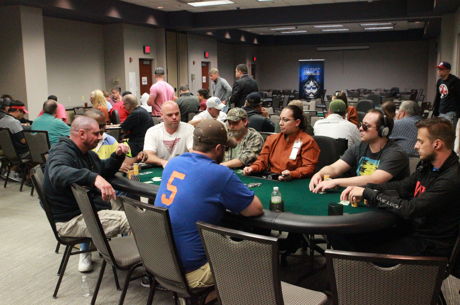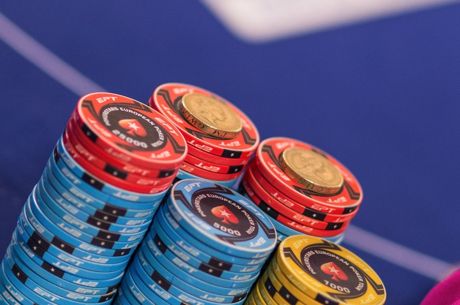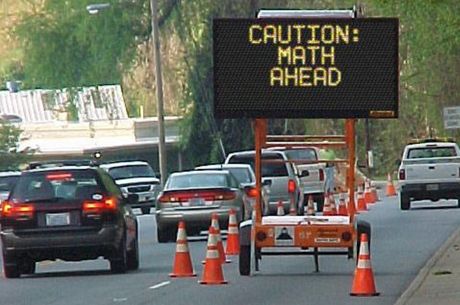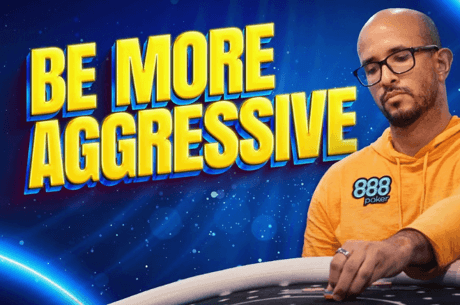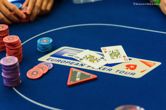Six Ways of Correcting a Common Poker Probability Error
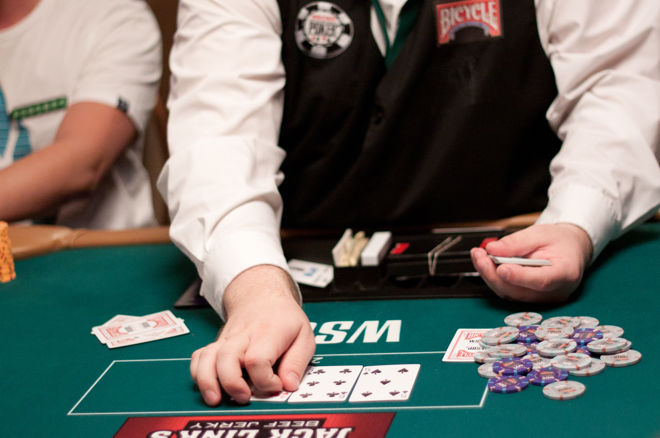
Many people share a misunderstanding about poker probability calculations -- but it's one that almost never gets explicitly addressed. I aim to change that.
We start with a common probability statement. To take perhaps the most often-used one, you flop a flush draw �� let's say it's in spades �� and want to know the probability of making your hand with two cards to come.
You know where four of the spades are: two in your hand and two on the flop. That leaves nine in locations unknown. You can see a total of five cards, leaving 47 unseen. The nine missing spades could be anywhere among those 47. I'll skip over the math, but just tell you that it works out to a 35% chance that one or both of fourth and fifth streets will be a spade.
Here's how the common objection might be stated:
"You're assuming that all nine unseen spades are available, but they're probably not. If we're playing a 9- or 10-handed game, roughly a third of the deck has been dealt to the players. Whatever spades were among those cards absolutely cannot show up on the board. Assuming there's an approximately even distribution of the spades through the deck, we have to guess that about a third of them are therefore not really possible to show up. The true number of outs, then is more like six than nine. And that drastically changes your whole calculation."
Now, maybe you've never thought this, and you've never encountered anyone who does. Fine �� you may not need this article. But trust me, plenty of people do think this. And to be honest, this objection about not having accounted for the cards that are no longer available is intuitively powerful. In fact, when I first started reading about poker probability, I, too had difficulty with the same line of thinking.
But despite its intuitive appeal, and even apparent obviousness, the objection is wrong �� absolutely, completely, 100%, no-doubt-about-it mistaken.
To help get you unstuck on this concept, over the years I've come up with a number of ways of thinking about the matter. They all get to the same place, but one of them may "click" better for some readers, another for others.
I'll go back to the flush draw calculation to explain them, but the same ideas work for other probability questions.
1. Why care about some cards more than others?
The objection states that any spades dealt to other players aren't available to hit the turn or river. That certainly true. But it's only half of the truth.
What's equally true is that any spades that will be left in the dealer's hand after he has finished laying out the board are every bit as unavailable as the ones that were passed out before the flop. When you say that you need to make an adjustment to the number of outs based on what cards have been dealt to other players, why aren't you just as insistent on making an adjustment for the cards that will be left in the stub of the deck when the hand is over?
2. The hard way
We could, with a lot of work, account separately for every possible number of "missing" spades. Anywhere between zero and all nine of them might have been in the starting hands of our opponents. We could do some math to figure out the probability that, say, exactly seven spades were given out, leaving just two more in the dealer's hand after he has put out our flopped flush draw. For each of those conditions, we could then calculate the probability of hitting one or both of those two crucial cards.
If we did that for each of the possibilities �� zero through nine �� the sum would give us exactly the same answer: 35%. (You'll have to either trust me on that or slog through the math on your own. Space does not allow showing my work here.)
3. How many players?
If the objection were correct, it would have a profound implication: You'd be more likely to hit a flush draw if there were fewer players at the table.
If you're playing heads-up, only a maximum of two spades can be "dead," so you've got at least seven you might hit. But if we were playing in a monstrosity of a game with 22 players dealt in, after burning a card and dealing the flop, the dealer has left in the stub of the deck just four cards �� exactly enough to burn and turn fourth and fifth streets. Surely, then, all or nearly all the spades will have been given away virtually every time, and you'll almost never make your flush. Or at least that conclusion is what is implied by the objection.
I hope you can sort of feel in your gut that that can't be true.
4. Test it
You can, if you wish, test that conclusion about whether the probability changes with the number of players dealt in.
Remove four spades and one non-spade from a deck to represent the five cards whose locations we know by the definition of the problem being that we have flopped a flush draw. Shuffle the remaining 47. Now burn-and-turn one for fourth street, burn-and-turn another for fifth street. Reshuffle the 47 cards, and repeat this enough times that you get a feel for how often you see at least one spade come up. It should be about 35%.
Now do the same thing, except that before you do the burn-and-turn thing, remove all but the last four cards, as if you were a dealer facing 22 players. After enough trials, you'll find that the probability of seeing a spade turn up is the same 35% as with the first part of the exercise.
In fact, you could repeat this exercise with a variation. Pick some arbitrary number of cards off the top of the deck before you do the burn-and-turn. You'll still get the same result. It doesn't matter which "packet" of four cards you use (as long as you don't cheat by looking first, of course) �� the result will be the same.
You could go even further, and reshuffle the deck as you go. That is, shuffle, burn the top card, shuffle, turn the top card, shuffle, burn, shuffle, turn. It will still end up being 35% over the course of many trials. Or you could just pick any two cards at random from the shuffled deck to represent fourth and fifth streets �� still 35%.
5. Only two cards matter
That exercise, whether you actually do it or just imagine how it would go, should get you to see the key to the whole mystery. The only thing that matters is whether there is a spade in one of the two exact positions in the deck that will become the turn and river.
For a ten-handed game, those spots are #26 and #28 as the cards sit in the dealer's hand before he pitches the first one. For a two-handed game, it's #10 and #12. The probability of a spade being in one of the crucial spots is obviously the same, regardless of which two spots will be the ones that matter for any particular hand.
How the nine unseen spades are distributed among the other positions matters not one whit, given our premise that we have two in our hand and two more on the flop. They might all be in the top third of the deck and given out. They might all be in the bottom third of the deck, and nobody will see them. Or they might be scattered some in players' down cards, some in the three burn cards, and some in what will be the stub of the deck when the hand is done.
It simply doesn't matter where they are, except whether they are in the two exact slots in the deck that will become fourth and fifth streets. Since we're assuming a random distribution, each of the 47 unseen cards �� the nine spades and the 38 non-spades �� is equally likely to be in those positions. That's why we can do the calculation the easy way.
6. There's no probability involved
Here's maybe the hardest part to wrap your brain around �� there's actually no probability involved. The outcome has been predetermined by the shuffle and cut of the deck. There either is or is not a spade in one of the two positions we care about.
A weisenheimer might cite the old joke, and claim that means the probability of hitting is 50-50, because there are only two possible outcomes �� you either will or you won't. Of course, that's not true because they are not equally likely outcomes. But even using language like "equally likely" there is misleading, because it's a deterministic thing, not a probabilistic thing.
If we were more precise with our words, we would instead say something like this: "If I were presented with this exact scenario a very large number of times, in approximately 35% of them I would complete the flush, and in approximately 65% of them I would not."
Thinking about it that way might help you stop focusing on this hand and which spades from this deck might have already been given to these players. That is unknowable.
Once you let go of the thought that you have to account for what might have happened to the exact nine cards that you're interested in right now from this particular deck, you can also let go of worrying about how many of them are still "available" to come. That, too, is unknowable.
There is no probability to this deck, per se. There is only probability as seen over the long-term horizon of thousands of similar situations. And for that calculation, all of the possible places that those elusive spades might be are precisely accounted for by the basic math you can find in any introductory book or web site discussing it.
Now do you believe me?
Robert Woolley lives in Asheville, NC. He spent several years in Las Vegas and chronicled his life in poker on the "Poker Grump" blog.
Be sure to complete your PokerNews experience by checking out an overview of our mobile and tablet apps here. Stay on top of the poker world from your phone with our mobile iOS and Android app, or fire up our iPad app on your tablet. You can also update your own chip counts from poker tournaments around ?the world with MyStack on both Android and iOS.

